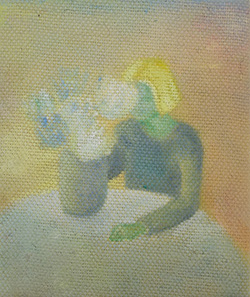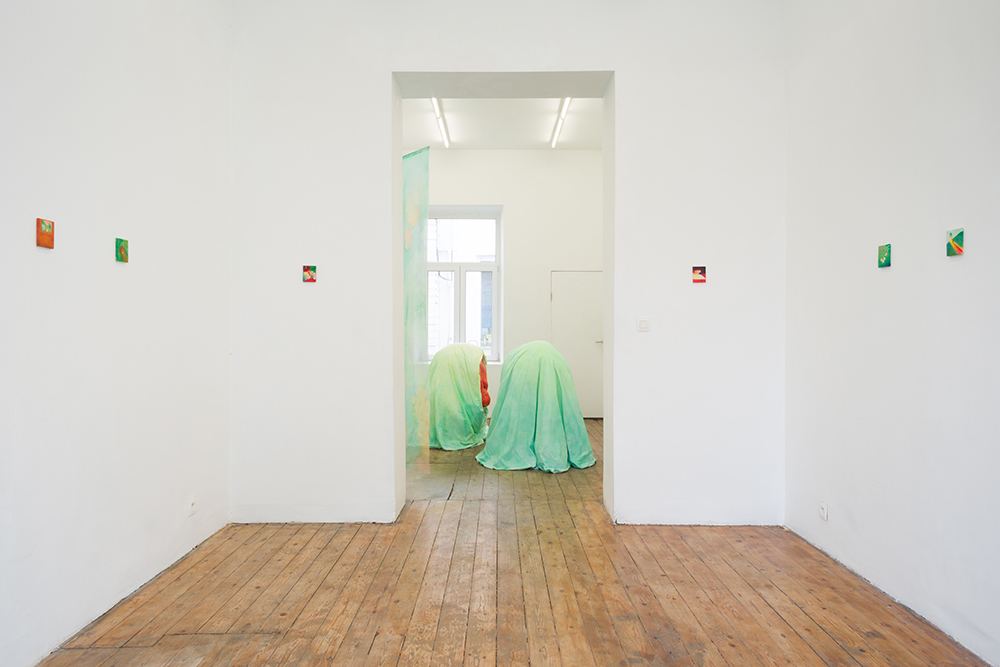

THE MUMBLE THE ATTRACTOR, CunstLink by feeelings, Brussels, 2020
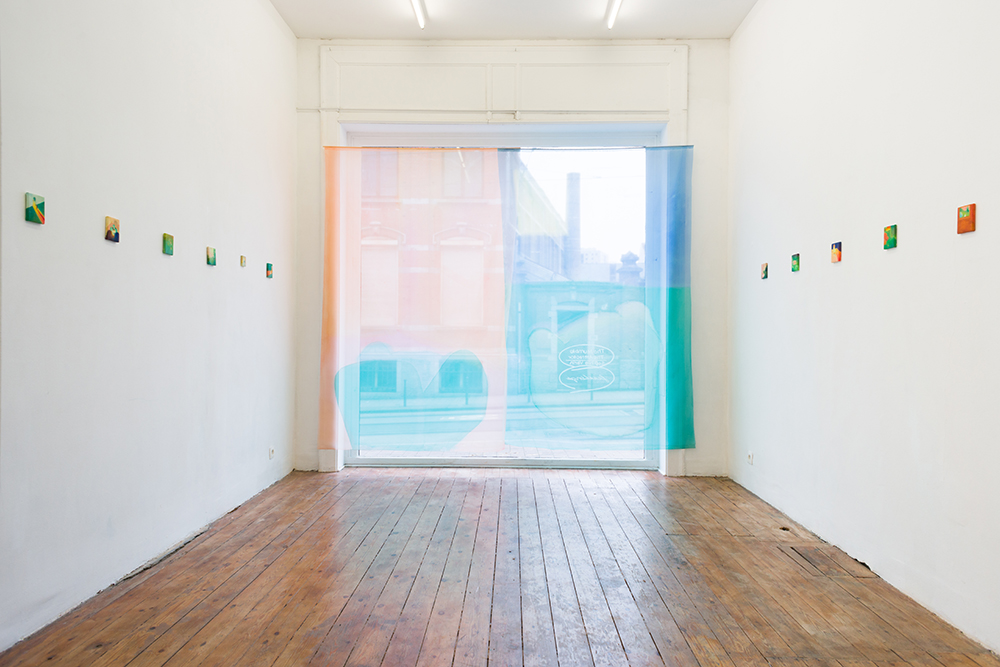
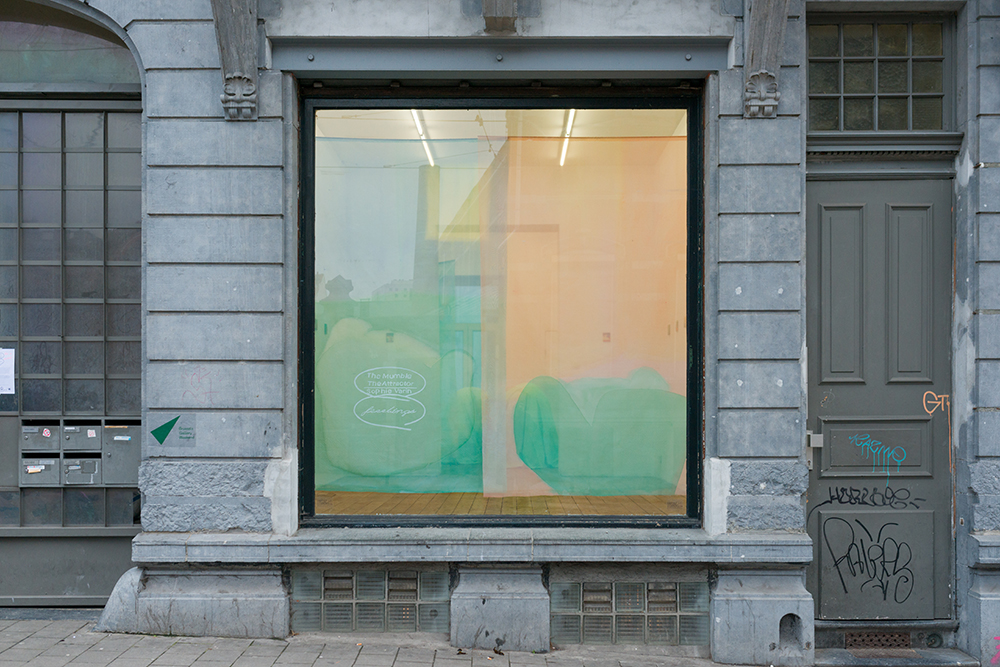
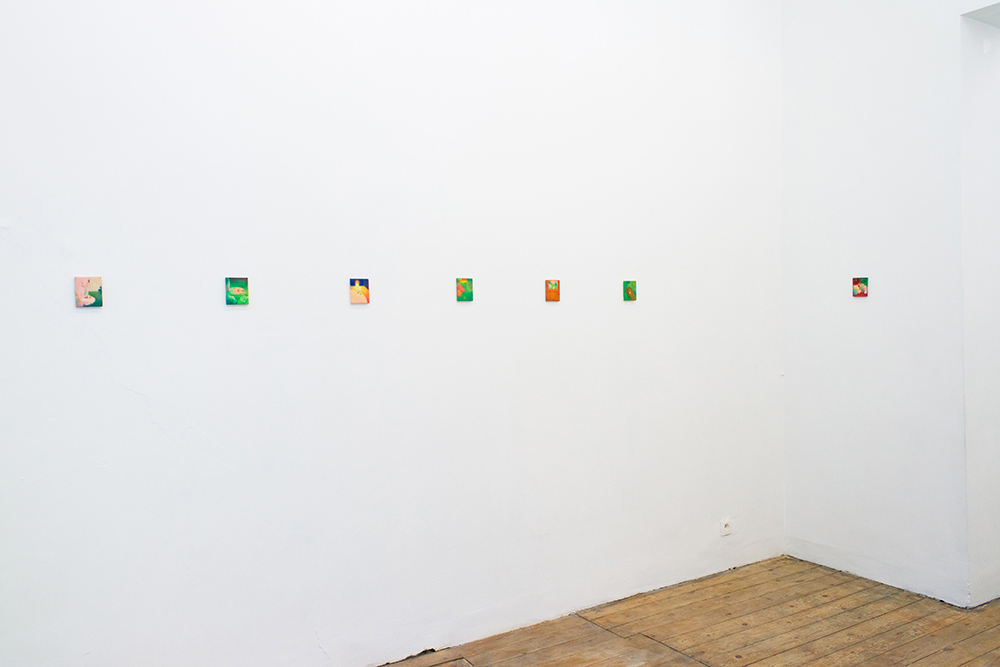
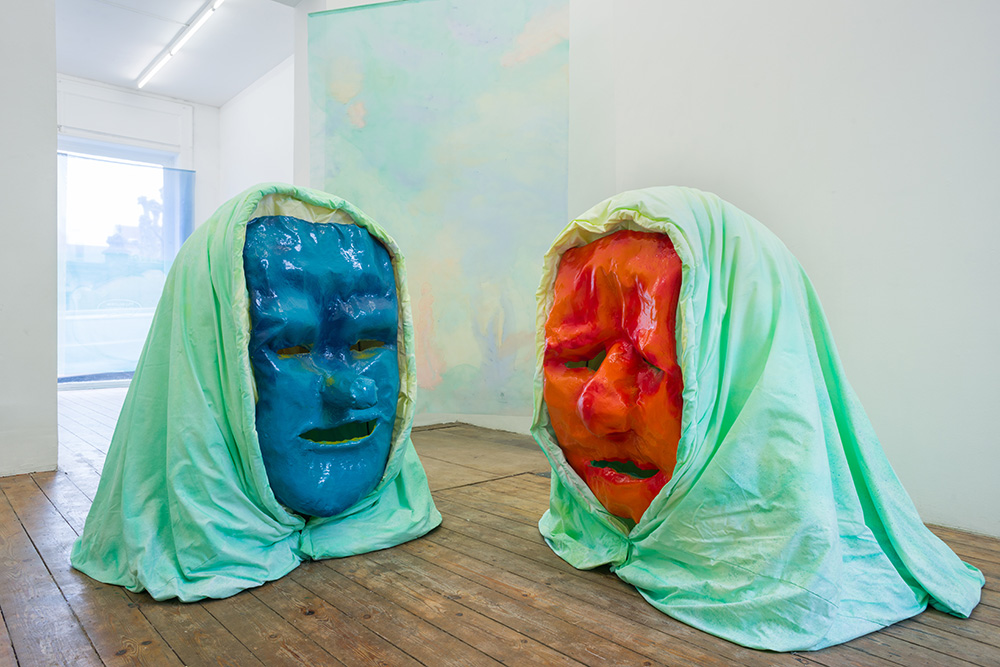
Various Interrupted Feelings 2020
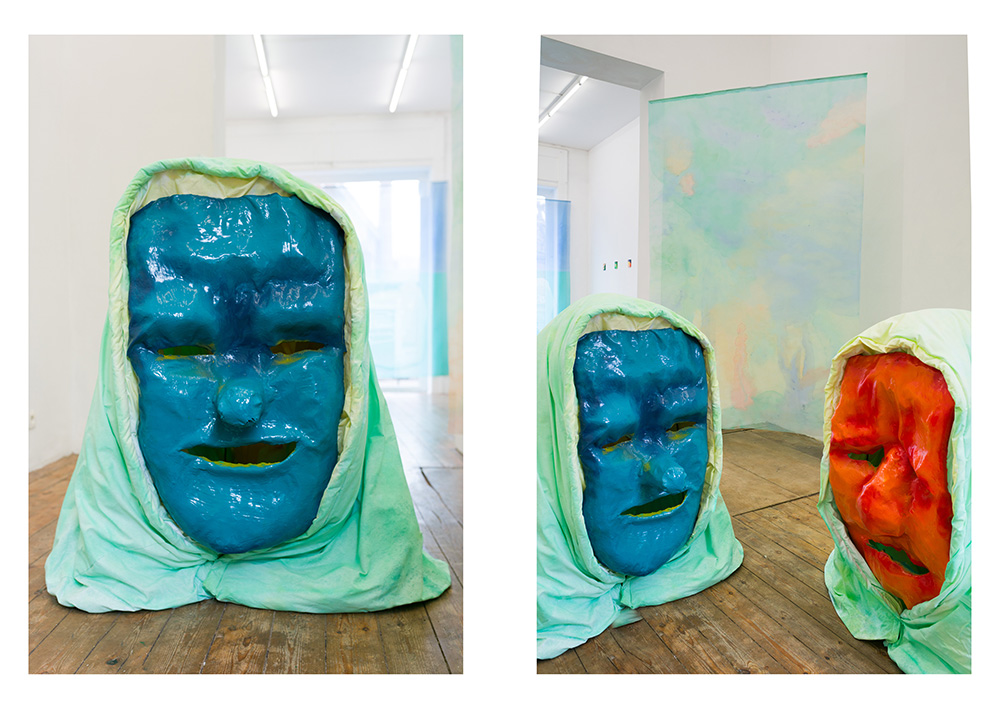
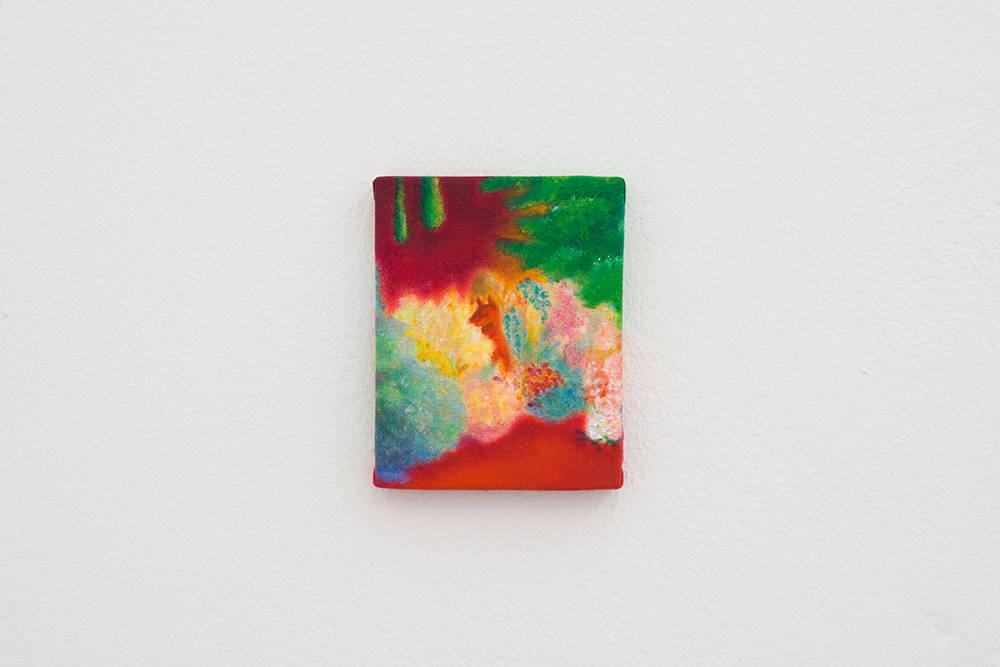
Vengeance Tardive 2020 oil on cotton 8x10cm
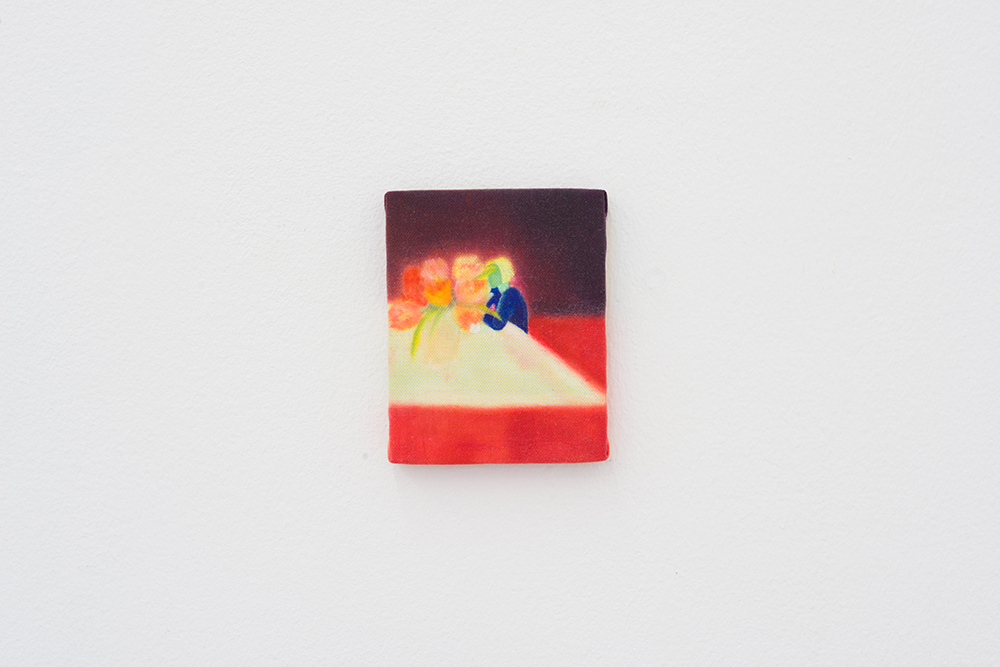
Redouté 2020 oil on cotton 8x10cm
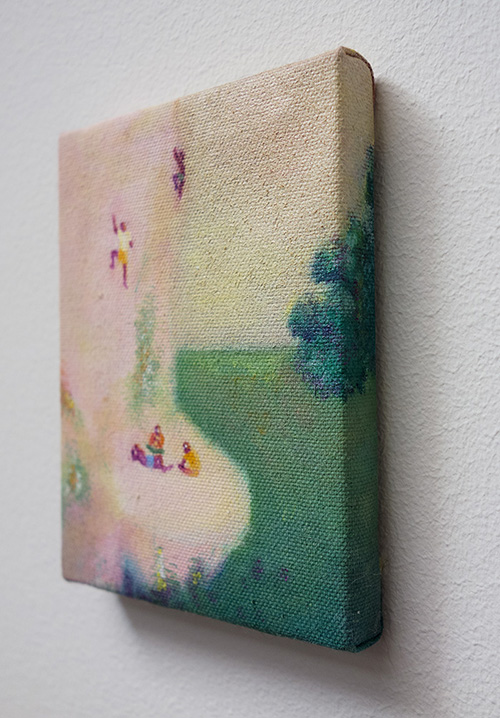
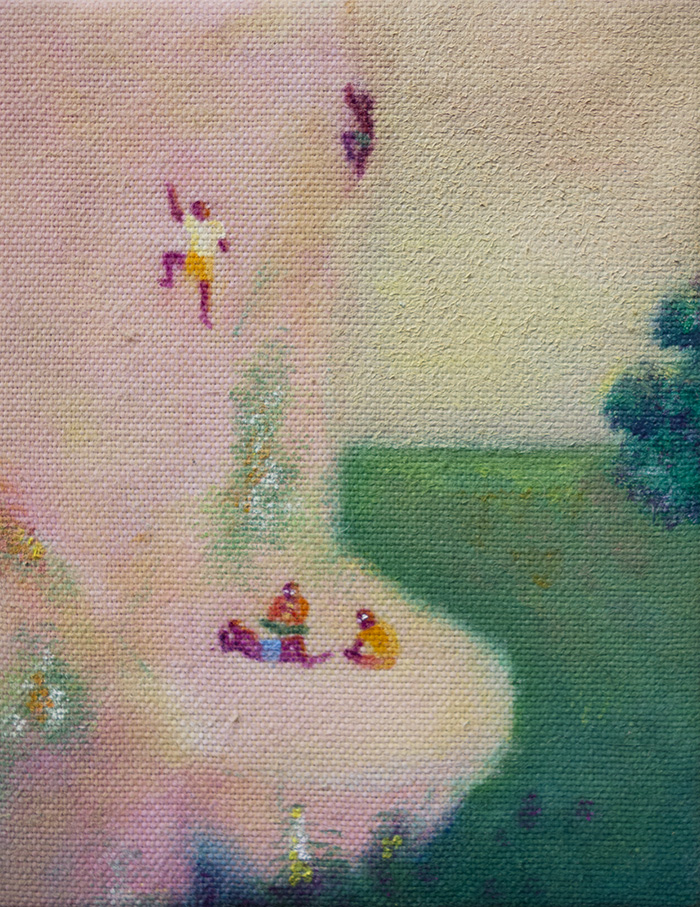
Mellow Rocks, Late Race 2020 oil on cotton 8x10cm
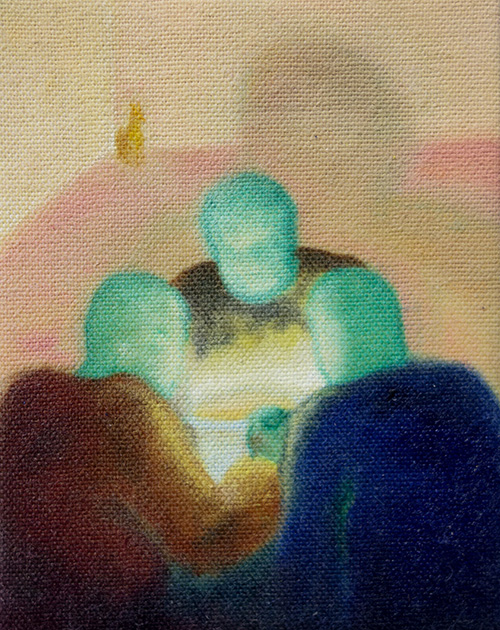
Glowy Delights 2020 oil on cotton 8x10cm
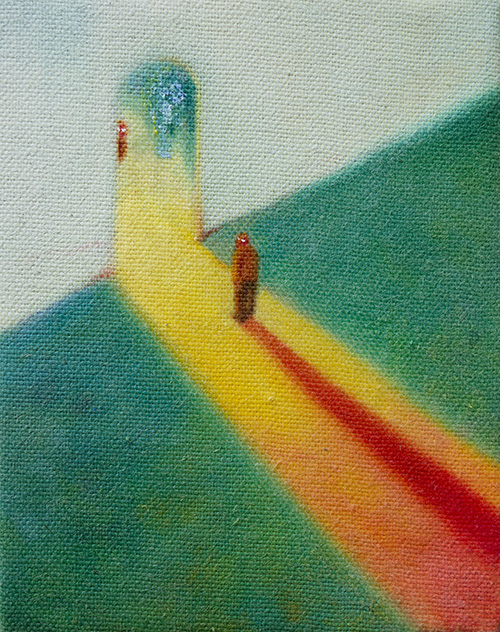
Convoité 2020 oil on cotton 8x10cm
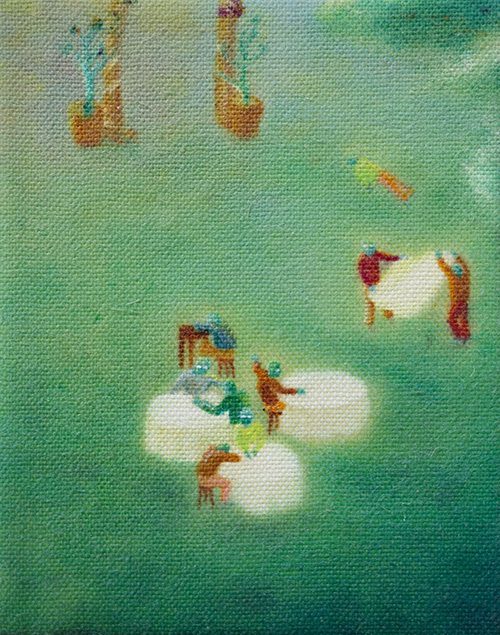
The Best Intentions 2020 oil on cotton 8x10cm
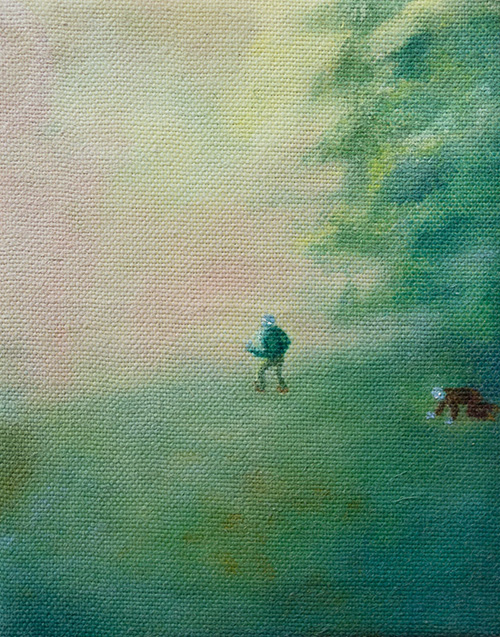
Soft Breeze 2020 oil on cotton 8x10cm
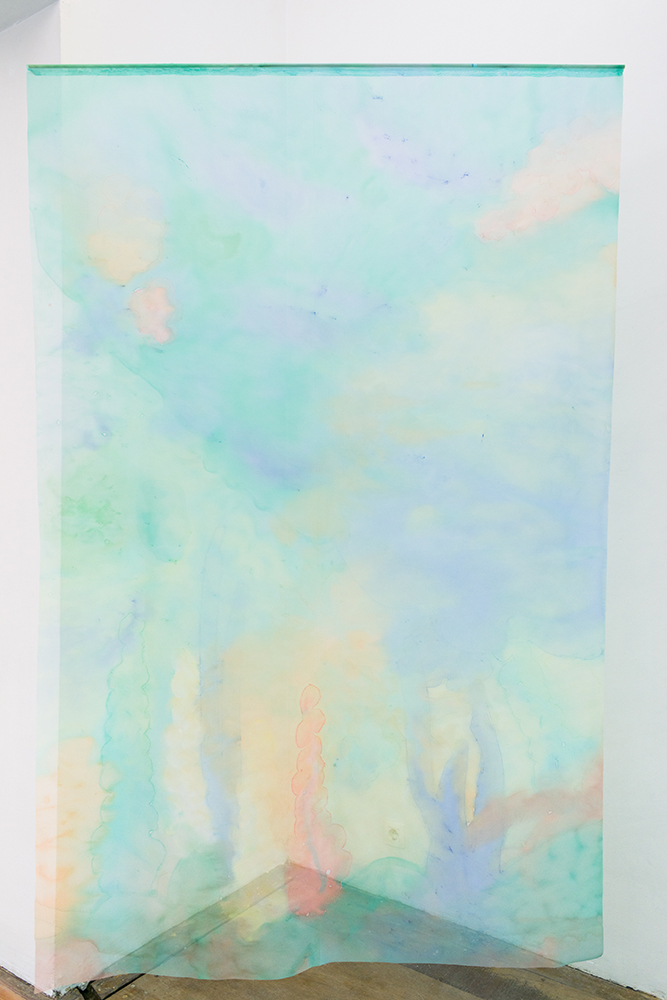
Endormi 2020 acrylic on fabric
PRESS RELEASE
We meet late in the afternoon, when the heat becomes bearable. All the blinds inside the bar are half-shut. There is just one guy sitting at the other end, staring out the window. He leaves as we enter. We sit in oversized armchairs and order multi colored cocktails and a strawberry milkshake. A bartender brings us super salty snacks that we dislike but eat anyway. We look at all the empty armchairs turning their back to us. A shy breeze makes its way through the moving blinds. In the distance, the bartender seems to mutter something about us to the cook. We begin chatting.
feeelings : As you pointed out to us, mumbling shows one interest for speaking without showing interest for being understood.The abstract sounds will only transform into language if the rest of the party manifest their desire to hear. Thus the conversation will start with others craving for you to speak. You can still be confused, you can still be uncertain of your thoughts but now you’re desired. You’ve attracted people into your narration.
Sophie : I see the mumble as a kind of lure. It triggers the other’s curiosity without fully taking the responsibility to do so. It is often an oral accident coming from embarrassment but if you use it purposefully it can also become quite perverse in a sense. It is the possibility of a combination of the two that attracts me. One is innocent, naive, and kind of cute, and the other is a manipulative second thought, but in the end they’re both awkward. But most of all, if you’re the person ‘receiving’ the mumble, you can’t really know which one of these two options you’re facing. All you can do is trust your own intuition about it.
feeelings : You made a relation between mumbling as a trap and fly trap in an earlier conversation where you mentioned Fran Betters. He is a fishing aficionado that is known for crafting trout flies -also called attractors if I’m not misunderstood ?- that don’t care to mirror the appearance of a fly (of but rather focus on the ability for the thing, the materials tied together to perform as a fly, reacting to such ways in water for example. A trout fly has the behavioural qualities of a fly as much as mumbling has the behavioural qualities of language and if I’m a trout I’ll be attracted to the fly trap and if I’m a human, strong chance I’ll be lured into the mumble trap.
Sophie : Yes! The mumble trap! Even though it could sound like a form of instinctive pre-language, I like how the mumble can actually be secondary to language in the same way the trout-fishing fly is secondary to the real fly. They’re both mimicking something pre existing.
feeelings : So I don’t want to put too much pressure on them, but I was wondering how the two hosts, the two characters greeting -with mixed feelings- the visitors relate to these ideas of attraction, mumbling and trap?
Sophie : I’m not really sure what the intentions of these two are, and neither do they. I think their position in the space suggests that they know why they are here, that they are in charge. The more you look at them the more unsure they get. They are unbalanced and unsettling. They’re greeting you but want to get the hell out of here at the same time. And if the hosts in charge seem sorry to be so, then the guests can decide to claim full authority. I’m not answering your question sorry.
feeelings : You’ve written a novel, a detective novel, The Best Intentions of JP Gutti and I wanted to ask about the figure of the detective and the importance of intrigue rather than narration itself in your work. There are intrigues : in your paintings we arrive upon something. But we don’t necessarily have to solve them or connect them to a broader story. Same goes as how I perceive the characters, they make me think of characters who don’t get the chance to have names nor stories of their own in movies but embody roles such as the baker or the teacher. In order to facilitate the story to circulate they only show one side of their subjectivity.
Sophie : Yes i think there is a kind of anonymity in the paintings, and in the characters depicted. It firstly is to maintain the subject quite generic. Nothing is really situated in place nor time. But also, as you point out, is it a way to make sure you will not be trying to solve a specific storyline but rather surrender to an underlying suspense. There are hints but not enough clues.
And to go back to the novel, I think i am generally interested in the figure of the detective as this autonomous character that demands to be trusted without necessarily being reliable. I really like the idea of a form of trust that can be completely unjustifiable. I believe artists are somehow asking for the same thing.
Bonus question: What's your favorite dish or do you want to share a recipe?
Sophie : I drank so much coffee while writing this that it killed my usual excitement for food.
We hear a series of gunshots coming from the forest. The bartender comes to refill our over-salted snacks. He says it’s too foggy out there tonight, it’s forbidden to hunt. Apparently quite a few ended up shooting their dog this way.
feeelings : At the entrance are two characters. They could be spirits who have adorned themselves with masks to welcome us. Pagan spirits with a frozen face that aim to show us a simulacrum. It's a parade or a bait for the one who enters the space. They are welcoming but disturbing, smiling and grimacing, grotesque and unclear. It's as if they set the tone, it's not believing in them that counts but creating desirable fictions (by desirable not to see the image smoothly, the idyllic dream, but rather what underlies, what exists underneath, what carries fantasies where the moral question has no place).
A bit as if fantasy would be more embodied than reality itself. This is also what the title of the exhibition seems to say, The Mumbler attracts from their opaque position.
It's a kind of daring seduction position that implies a dissatisfaction with reality and releases a cascade of what you call 'hallucinated scrambling'.
And in fact it seems to me that what you propose is quite exciting, because in this in-between that you talk about, - and that is everywhere; in the sunsets, in the dawns of your paintings, in the faces at the entrance, or in the very position of the curtains/screens - there is something very strong, it is the notion of ambiguity as a position in itself. Something to hold that is not played out in the extra-ordinary, authority or self-sufficiency. Do you agree with that?
Sophie: Yes, and actually you phrased it so well that i don’t know what to add. Apart maybe that when you think of ambiguity, it is often associated to something on the verge, a temporary unbalance. On my side, i’m trying to see if there could be a permanence in ambiguity. Like a serene trust in something presumably unsettling.
feeelings : And perhaps it also resonates with the idea of deciding to be seduced?
Sophie : Precisely. I believe seduction implies a surrender. But it’s an active and alert surrender. It’s choosing to gain ground and lose some at the same time. And it’s also the interaction i’m trying to create between the audience and the characters of the paintings.
feeelings : It's remarkable in the sense that I feel that it totally instigates the viewer to choose to take part in what's going on in your work. It's like you're betting very hard that absolutely nobody is innocent?
Sophie : I really like the idea of betting hard. And yes I think that, in a light way, nobody is innocent. My idea is to manage to create a game between the audience and the works where they are mutually generating their own guilt. Both are caught and accusing each other. I also like to work with the idea of threat.
feeelings : This leads me to another question about the viewer's/characters' gaze, which is never devoid of fantasy. The act of mumbling, which is an action normally dedicated to language, is as if you had transposed it to the gaze: the fleeting gaze, the sideways gaze, the gaze of the one who doesn't want to be seen, who doesn't want to be put in a situation of social interaction and who is forced to do so, the gaze of the animal caught by the headlights of a car! Situations that are extremely painful to live through but almost invisible on the scale of a body.
Could you talk about this idea of imperceptible that can cause fractures (as you say about the show: the excess of gentleness (...) could become threatening).
Is this something you could link to your practice? Does it resonate with you?
Sophie : I’m going to begin with what you say about the gaze and the fantasy - more incarnated than reality itself- as you were saying earlier. I’ve been thinking a lot about situations of desire while making these works and how desire is able to completely override what is seen. Brutally, desire allows itself all extrapolations of the real, and painting for me has been the same thing. There are characters that are kind of blind, heavy color-shadings, bodies crushed to the ground… like a stupor under high heat. Because of that, the scenes seem invaded by a kind of fever. A drunkenness - but not necessarily from alcohol- maybe even a hallucination. Then we understand well it’s not about situating the depicted storyline but accepting to share the curious and troubled state of someone that has been observing for too long, or has been dreaming for too long, or has tried to remember for too long.
I believe, as you say, that I’ve been trying to transpose a language-mumble to one of the gaze, of emotions and of colors. It’s kind of the first time that I openly try to convoke emotions. At least I think that these mute characters, caught, would urgently like to say something. Embarrassed, they speak without words, maybe with their eyes, and the mumble here comes as a thing that would like to be shared without being known.
